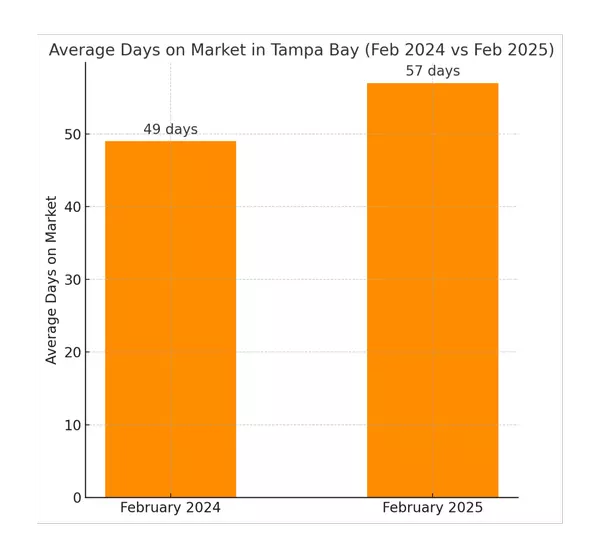Surging Inventory and Market Shifts: What Tampa Buyers and Sellers Should Know in 2025
Tampa’s real estate market is entering a new phase in 2025. The days of bidding wars and limited inventory appear to be easing, making room for a more balanced market dynamic. Recent data from Realtor.com shows a significant change in Florida’s housing landscape—168,717 homes were listed in February 2025, reflecting a 40% increase compared to the same time last year. January had already set a record with over 157,000 active listings, signaling that these trends are not just temporary fluctuations but part of a broader shift.
Understanding the Driving Forces Behind the Market Change
So, what’s behind this increase in available homes—and how does it affect the Tampa area specifically?
-
Inventory has been rising steadily since mid-2022, but only in the past year has it consistently surpassed pre-pandemic levels. The pace of home sales has slowed, with buyers facing affordability concerns fueled by elevated mortgage rates and ongoing inflation. As a result, many are waiting longer before making purchase decisions.
-
Tampa’s inventory has followed the statewide trend closely. According to Realtor.com, the number of homes on the market locally has grown by nearly 58% year over year, giving buyers more choices and making it harder for sellers to stand out.
-
Hurricane recovery has also contributed to the rising inventory. Many homes impacted by recent storms are being sold in as-is condition, leaving buyers to handle the necessary repairs. In addition, permit delays for post-storm renovations have made it difficult for some sellers to prepare their homes adequately for the market. These challenges, combined with rising insurance premiums, have placed additional pressure on both sides of the transaction.
How These Changes Impact Buyers and Sellers
The shift in inventory levels is reshaping the dynamics between buyers and sellers in Tampa:
-
For buyers, the increase in available homes means less competition, greater negotiating power, and potentially more favorable terms. It also creates opportunities to explore options without the urgency seen in the past few years.
-
For sellers, the message is clear: expectations need to adjust. Homes are staying on the market longer, and price sensitivity is becoming more apparent. Sellers must be strategic in preparing their homes and responding to buyer expectations.
Two Key Strategies for Sellers in 2025
In this more competitive environment, sellers need to do more than just list their homes—they need to prepare them thoughtfully and offer added value where appropriate. Here are two practical approaches:
1. Complete a 4-Point Inspection Before Listing
A 4-point inspection covers the home’s roof, electrical system, plumbing, and HVAC system. Having this inspection completed before listing allows sellers to identify and address potential concerns early, reducing the chance of unexpected issues during negotiations. It also builds trust with buyers who may be hesitant in a more cautious market.
2. Consider Offering Concessions
As the market balances out, seller concessions are becoming more common again. In fact, the National Association of Realtors (NAR) reports that about 24% of home sellers in 2024 offered some type of concession to help finalize a sale. This could include:
- Covering a portion of the buyer’s closing costs
- Offering a home warranty
- Reducing the purchase price instead of making repairs
- Leaving behind appliances or furniture as added value
These concessions don’t necessarily cost sellers additional money upfront, but they can make a home more attractive to budget-conscious buyers and keep deals moving forward.
Final Thought
Tampa’s housing market is evolving. While it may not be a full buyer’s market just yet, the landscape is clearly changing. Sellers who take a proactive approach—by preparing their homes properly and being flexible during negotiations—are still well-positioned to sell successfully. Meanwhile, buyers are finally seeing more inventory and breathing room to make thoughtful decisions.
Staying on top of these trends is essential, whether you’re preparing to sell or planning to buy in the months ahead.
Have questions about how this shift impacts your real estate plans? Let’s connect.
Nikolay
Categories
Recent Posts










